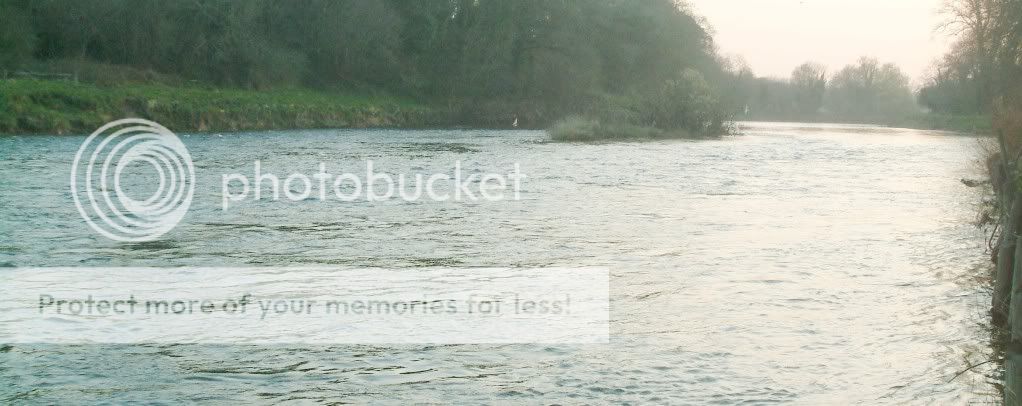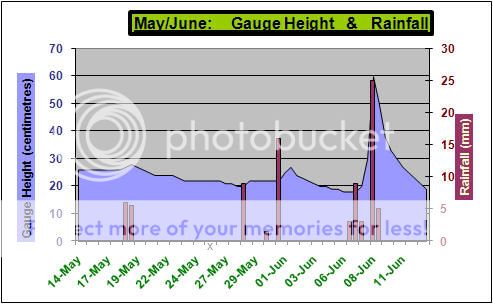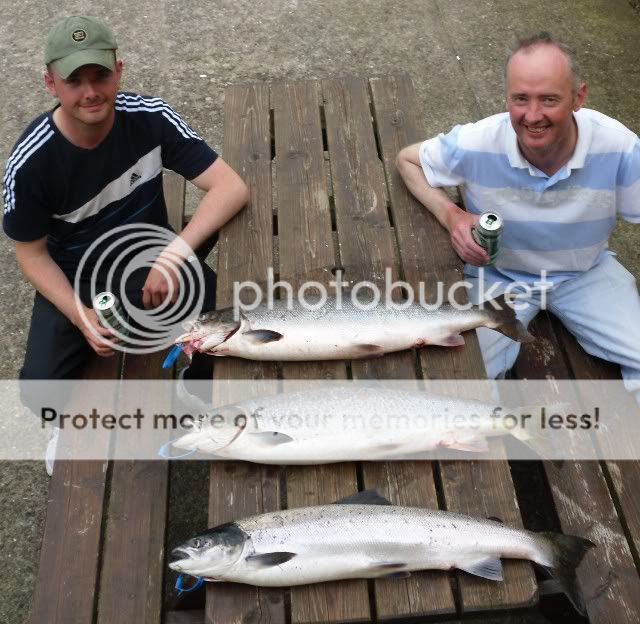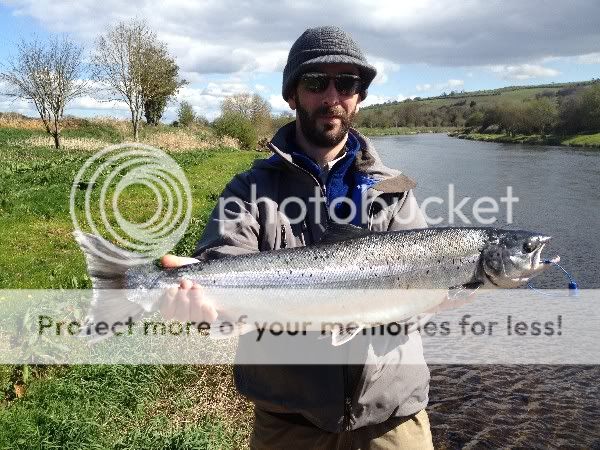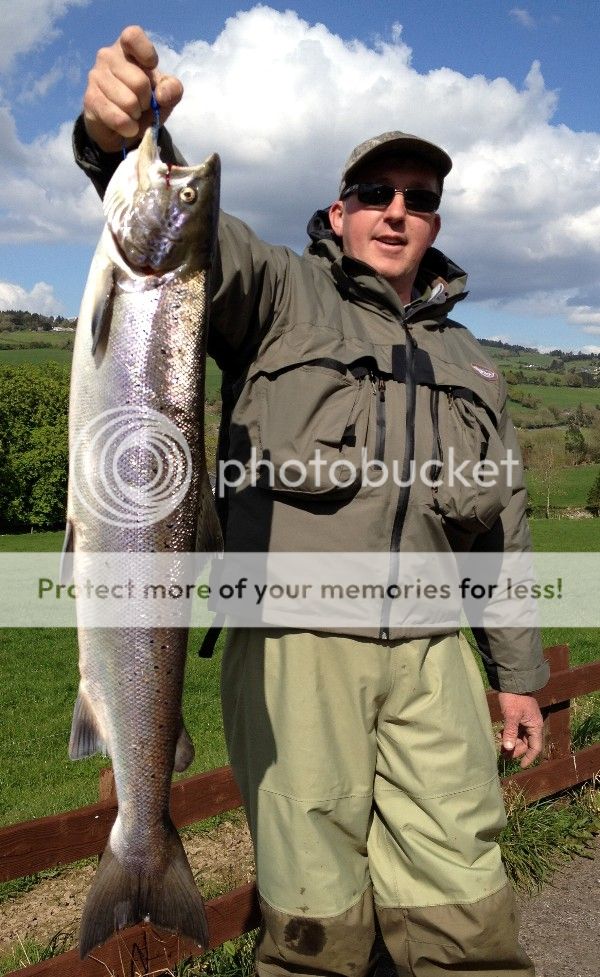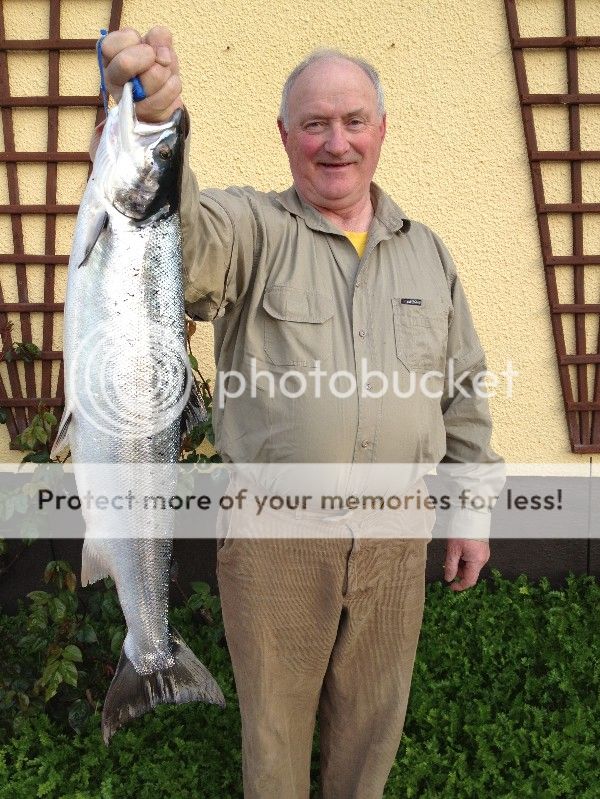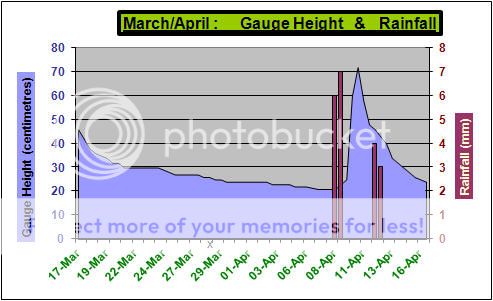The Biggest Fish Ever since 1986?
On September 15th. last, Tony Murtagh from Co. Dublin landed & released a fish estimated at approx. 25lb. weight.
This huge fish was taken on spinner on the Island Stream on Beat 6 - Lower Kilmurry.
The fish was rather coloured but fin perfect and very well conditioned – being very deep bodied & broad-backed.
It was quickly released without even a picture being taken as they had no camera & no weigh net!
It measured 96cm (38\") long with an estimated girth of 50cm (20\").
Some of our recently caught fish were measured for comparison:
A 13.5 pounder measured 81cm, a 15 pounder was 85cm & a 19.1 pounder measured 89cm.
The gillie that released this fish said that he could only just get his thumb & forefinger of both hands
around the wrist of the tail, which was definitely much thicker than the 19 pounder.
Heaviest Weighed Fish of 2009

On September 18 last, Paul Rosier caught the Heaviest Weighed-In fish of the season
on prawn at Gorman’s Pool on Kents – Beat No. 4. It weighed 19.1lb & was absolutely tide-fresh.
The same day, they saw literally hundreds of fish on the beat, including at least a dozen
which they reckoned were the same size as the one he caught – it was the only take of the day!
Heaviest First Ever Salmon of 2009

On September 8th., Belgian anglers Guillaume Verlings (l) & Jean-Paul Hendricks (r) both caught their First Ever Salmon!
They were both taken on spinner on the Castle Flat on Beat 3 - Ballinaroone & weighed 16.6 & 9.8lb.
Both fish were sea-liced! Guillaumes\' was the Heaviest First Salmon of 2009!
In 2009, there was much talk about drastically reduced numbers of salmon running into many rivers.
Here on the Blackwater, whilst the spring run wasn’t so good, from May on we saw good numbers of fish running.
May in fact produced the best number of fish caught (53) since 1996 and was in fact the third best ever total for the month
since I started accurate records in 1986. It was only beaten by 1994 (82) & 1996 (72).
Whilst it was certainly not a year when the number of salmon caught for the whole season was outstanding,
there were a couple of factors which help explain the lower catch figures for the backend & consequently the total season catch.
This was in part due to less rods fishing ( a consequence of the recession)
which is a major factor which is often not taken into consideration when looking at catch statistics.
The other startling factor in 2009 was the behaviour of the fish themselves.
Whilst there were large numbers of salmon in the river, especially in August & more particularly in September,
they displayed a startling reluctance to take any offering.
This was a phenomenon which was observed throughout Ireland this last season.
The table below shows the catches since I took over the Lodge in 1986.
Blackwater Lodge Fishery - Salmon Catch Statistics.
Catch & Release
As an aside – 43% of the fish caught in 2009 on the Lodge Fishery were released.
This is well above the national average of 38% in 2008 as recently published in the
Central Fisheries Board Wild Salmon & Seatrout Statistics report
for 2008. Our guests released 52% in 2008.
This report also states that 12.9% of all fish caught & released in Ireland in 2008 were on the Blackwater
– the highest in the country for rivers which were not designated as C&R only.
Graph 1: Catch per Rod Day

A far better judge of the quality of the fishing is to look at the average catch per rod day
rather than mere number of fish caught, which of course depends on fishing effort.
This table above shows these figures for the last 3 years on the Lodge Fishery,
which corresponds to the period since the drift nets were banned.
It is interesting to note that in fact August is the best backend month,
which wouldn’t be apparent from the catch statistics for the number of fish caught by month alone.
In August, there are actually far less people fishing on the Lodge beats compared to September.
Graph 2: Dramatic increase in larger fish.

The Blackwater has always been better known for its prolific runs rather than the size of the fish.
I must admit to having had the impression myself in the first 2 years without drift nets (2006 & 2007)
that there was an increase in the size of fish coming into the river,
but accurate analysis of the weight of fish caught doesn’t actually bear this out.
This graph illustrates the percentage (of the total catch each year) of fish caught by weight class.
Please note that for this purpose - for example - 8lb. represents fish between 8-8.9lb, 9lb represents fish of 9-9.9lb etc.
For simplicity, I have only included the figures for fish in the 8-14lb class which is where the biggest difference can be seen.
Fish in this class accounted for 33% of the 2009 catch compared to only about 18% for the period 2004-2008.
The graph gives data as follows:
- The average percentage for the years 2004-2006 i.e. the last 3 years when drift nets operated.
- The average percentage for the years 2007-2008 i.e. the first 2 years without drift nets.
- the figures for the 2009 season.
We can conclude from this that there was actually very little difference in the size of fish caught in the 8-14lb class
for the 3 years before & the 2 years after the drift net ban.
Graph 3: Percentage Increase by Weight Class in 2009 compared to the 5 Year Average

There is however a dramatic difference in 2009.
The true difference is perhaps not adequately illustrated in the above Graph 2.
To better show the real increase, Graph 3 above shows the percentage increase
in each weight class by pound compared to the average figure for the period 2004-2008.
From this we can conclude that - relative to the 5 Year Average (2004-8):
- The proportion of fish caught in the 8-10lb. class increased by ~50%
- The proportion of fish caught in the 11-13lb. class increased by ~150-200%
- The proportion of fish caught in the 14lb. class increased by ~400%
Looking Forward to 2010
It will be very interesting to see what will happen next season.
In the early ‘90s we carried out our own scale-reading study of fish caught on the Lodge fishery.
Grilse: We concluded that grilse were almost exclusively 1/1 i.e. spent one year in the river & 1 winter at sea.
Therefore we can expect to see the return of a lot more grilse in 2010 – the progeny of the 2007 run – the first season without drift nets.
Larger multi-sea-winter fish: These were 2/2 to 2/4. We would expect the first of these to return in 2012, but it will be very interesting to see
if the increase in 8-14lb. class fish will be sustained next year.
Prospects for a great season’s sport for anglers for whom size really does matter!
For info visit: http://www.ireland-salmon-fishing.net/










